Blended retailing is the title of a concept being used by Volkswagen UK in its dealer network that accepts the digitisation of the sales process and the attention given by all retailers to everything ‘e’, but doesn’t assume the traditional face-to-face contact in the showroom and sales staff with encyclopaedic knowledge of the brand is redundant.
Blended retailing is the title of a concept being used by Volkswagen UK in its dealer network that accepts the digitisation of the sales process and the attention given by all retailers to everything ‘e’, but doesn’t assume the traditional face-to-face contact in the showroom and sales staff with encyclopaedic knowledge of the brand is redundant.
Blended retailing is the title of a concept being used by Volkswagen UK in its dealer network that accepts the digitisation of the sales process and the attention given by all retailers to everything ‘e’, but doesn’t assume the traditional face-to-face contact in the showroom and sales staff with encyclopaedic knowledge of the brand is redundant.
Blended retailing is the title of a concept being used by Volkswagen UK in its dealer network that accepts the digitisation of the sales process and the attention given by all retailers to everything ‘e’, but doesn’t assume the traditional face-to-face contact in the showroom and sales staff with encyclopaedic knowledge of the brand is redundant.
It merges clicks with bricks, with people. And a little bit of London Olympic magic.
Volkswagen’s passenger cars head of retail operation Ian Plummer (pictured) explained that the first two elements count for nothing if the third doesn’t bring the parts together, in “a blend”.
“Traditionally, the influence in managing a customer journey, a large part would be done offline, then some research would be done online and then you would seek a physical experience,” he said.
The focus for the motor retail industry has, up until recently, been on the physical part. Then more emphasis started to be focussed on digital, but as a separate entity. The lack of linkage between the two, in Volkswagen’s view is illogical and problematic.
“A customer would have typically started their car search online and come into the showroom expecting there to be some link or consistency between what he has experienced of the brand up until that point and what the dealer will deliver.
"Instead the sales executive delivers what he or she is used to and the sales manager, who has probably been in the industry for many years, is comfortable with this traditional approach,” Plummer said.
“We push customers in a way we feel comfortable with, rather than giving them what they are actually looking for.”
He said the company – and its dealers – were acknowledging the non-linear way in which customers collected information, so online and social media networks as well as through brochures, test drive, email and telephone enquiries to dealers and showroom visits.
“When they are interested in actually going further in the sales process and they do get in touch with us or we get in touch with them, it is at that point that we need to take account of what they have actually been thinking, doing, looking at in these various different media and that we reflect that in the way we deal with them.
“We modernise, basically, our approach to dealing with them.”
So, a primary tool in helping dealers cope with this is the iPad, the digital showroom, in VW parlance. It was the also the first step in the integrated sales experience journey. In two years of use it has improved, not just car sales, but also has contributed to a 40% rise in options and finance.
How? There are 15 identified points in the sales process which digital technology can influence according to VW.
“Taking finance as an example, the sales person is able to use the information on the iPad to explain a PCP. In the industry we use the word as if it’s going out of fashion, but how many consumers know what it means?” By inviting the customer to read an explanation on the iPad, the customer is not only fully informed, but compliancy concerns are dealt with.
Another is the part-exchange.
The tablet has a part-exchange appraisal tool on it which the sales person uses to record facts such as mileage, specification and vehicle condition on.
The system links to data on the price of similar cars at auction in the last three months via a BCA-powered application, then, perhaps during a test drive the deal on a new car can be agreed with the sales manager meaning legitimacy, credibility and trust for the customer.
And it means no more shuttling between the showroom and the sales manager’s office for the salesperson during negotiations.
Less dry though is the ability of sales staff to demonstrate, rather than just talk about, in much more engaging fashion the myriad options available to customers and the highly technical safety features.
“Our specification options are very rich. So, an iPad loaded with all the possibilities provides a more integrated and enhanced, rich media experience. We want dealers to sell the value of the car, not just talking about the deal.”
With finger touches, options can be added and colours changed. The iPad can also be held over a part of the car to see how choices would change the appearance. The customer can be sitting in an SE spec car and, via the tablet’s screen ‘see’ a GT interior.
VW is also looking at the potential to use video on the iPads to do a five-point presentation of the car, with the customer walking around it, being shown how different features work on-screen, different specification and perhaps features such as a boot compartment that isn’t immediately obvious.
“When you know that a customer is particularly interested in safety features or they have pets that need to be carried in the car, a sales person can tailor their use of various bits of media as you are doing the vehicle presentation.”
It represents an extreme example of Plummer’s point around the merging of the digital and the physical.
“We still want customers to touch the car, but with added theatricality and potential benefit to the customer and dealer in the understanding of options available and the upsell opportunities.”
It is also, VW believes, a lot less confrontational way of selling. There is no desk between the dealer and the customer, the computer screen is now visible to both and by standing or sitting alongside the customer the body language is a lot more relaxed.
A sales person’s precise product knowledge is now not so important. “We have the widest coverage of market segments of any brand in the UK so it is a complicated range to manage for a sales executive. To manage all the different components of all the specifications of that range is even harder, and to know how to pitch them to the appropriate customer is extremely challenging,” said Plummer.
“As long as you have qualified the customer and understood them well enough, a tablet is a great tool. But it doesn’t replace understanding what the customer actually wants.”
And, Plummer insists, there is no railroading of customers into making choices set by the order of events programmed into the tablet.
“The interactivity and the choices that are clear to the customer mean it’s difficult to be led in one direction. It is much easier in fact with a more intuitive and integrated tool like this to actually allow a customer to choose the car that suits them, because literally they can see they add an option, remove another. The impact on the price is clear.”
And, of course, the customer can hold the iPad. “A customer would never have taken control of a sales person’s mouse.”
The software also links to the stock management system for the site and the group to ensure the customer can have what they want or give them the choice to wait.
Another key element is retention of customer preferences. So, a customer makes their way through the search process, only stopping at the point of purchase. Should they come back a record has been kept of their earlier progress.
“On our lead management tool, we record the choices you make, the vehicle configurations you choose, are stored. And if a customer buys a car they are given a code allowing them to track the new car’s journey from factory to dealership and allowed to choose how we keep you posted on its progress.”
A missing link at the moment in the use of tablet computers is in aftersales, where customer management is left to the DMS.
But there is a tablet-based project being piloted now to manage the consultation of the customer at the point they leave their car at the dealership, supported by the electronic vehicle health check.
Customers appreciate this level of attention and therefore so do dealers.
In the first year of use VW recorded a 1.3% improvement in overall customer satisfaction levels for those using tablets - and last year the gap increased to 1.9%.
When a dealer is already scoring 95, this difference can mean a lot financially.
“It can mean the difference between a percentage of margin on all of the sales in a particular period. We have a six-monthly period of measurement for our CS scores, but actually pay quarterly. A percentage point improvement, based on three months of sales, using our showroom volume rate to bonus (VRB), will probably equate to 150 units of value. So - a considerable impact.”
Plummer had touched on the use of product demonstration on the iPad using video. But its use goes deeper than this.
VW has partnered with ‘CitNow’ to provide the tools and the software to allow dealers to make their own videos throughout the network. It’s being used in technology demonstrations, handover preparations and ‘red’ work approval request sent direct to customers.
Plummer described the benefits as “huge” to winning customer confidence as well as entertaining them. A video of walk around of a GTi pre-handover made by a dealer went viral, he said because of the shared passion for the car.
For all the talk of technology taking away the salesperson’s flair and personality, video is an area where personality and creativity can flourish when it’s appropriate.
The use of tablets and video and the re-education of staff on the modern sales process is just one element of how VW believes retailing needs to change.
Consideration of the ‘bricks’ element of the blend is also leading to changes.
More than half of the 208-strong network has adapted the Volkswagen Retail Concept (VRC) its new corporate identity standard.
Plummer describes it as ‘fresh, crisp and modern”, with a pale backdrop to show off the model line-up to the best effect. There is no suggestion dealerships will become less important – or will now reduce in number. In 2012 when Plummer started at VW the total was 248, including authorised repairers.
“Customer expectations on the quality of the environment they shop in are growing. There is an expectation and understanding that you are not going to necessarily have a fantastic brand centre on every corner of every street, but the ones that do exist must have sufficient pull to get you to travel a reasonable distance. And I’m talking 20-30 minutes in most cases.
"And when you arrive you expect a fantastic experience.
“Apple, John Lewis or Waitrose demonstrate this bricks and clicks philosophy very well,” Plumber said.
The customer still wants to touch the product; they still want the advice of a brand expert and the relationship with an aftersales department. At right now the customer should see a minimum of 10 vehicles on show, with some sites able to display 37.
“Given the strength of the brand, customers are prepared to travel to these places and want a certain experience.”
But there is always now a permanent merging of the physical and the digital. You can test drive a DSG equipped car or try ‘lane assist’, but sometimes you want to understand what is happening too, so digital media helps with this. See an example.
And there is no replacement for the test drive: “You can’t sell the benefits or explain the benefits of a DSG gearbox to someone without actually experiencing ride quality.
“The driving technology in the new MQB platform, for example, on the Golf is such that you have to experience it. The entertainment within the car as well is something best experienced when you are driving. You can sit in the car and play around with the sat nav and link it to your phone, but actually seeing and doing it is essential.”
And having 208 sites, and with a forecast to sell more than 200,000 cars this year, means the sales per outlet ratio – and therefore profitability per outlet – is strong.
“This allows our retailers to invest in this retail concept and provide the theatricality that we are looking for. We are looking for these sites to be brand centres, destination points in their local market areas.”
An element of theatre Plummer is referring to is the use of wall mounted televisions which can show what the customer can see on the iPad via an Apple TV link. Only a few sites have these.
But it doesn’t find favour with all customers. There are those uncomfortable with the flamboyancy of it and a sizeable proportion that want their experience to be even more private, seated in a room away from the showroom. The various choices are being tested with the network now.
Tablets are in every VW showroom in the UK and video creation is widespread. But they are not being used in all cases. VW believes it is being used in up to 70% conversations with customers.
Plummer understands it is not always appropriate, but there are alternative reasons.
“There is opposition to change,” he said.
After technology and buildings, it leads him onto another cornerstone of the blended retail concept - people.
The world of the highly informed customer who now only has to visit 1.3 showrooms before making a purchase has prompted debate around the role of sales staff and the possibility their role becomes more about part-exchange valuations and finance sales than selling cars.
“I don’t prescribe to the view that sales people have, or will become, merely order takers.
“A lot of customers will come to showroom with a pretty clear view of the model they are keen on, be it new or used.
"But it’s not totally refined. It is the assistance in a credible, honest, open and hopefully warm and maybe even humorous way from the sales person that is critical in terms of making sure that you have built a rapport which in turn provides value to the customer,” Plummer said. “If you do this hey are getting what they wanted. This is no box ticking exercise.”
So, the quality of the interaction before the showroom visit has become more critical.
VW is working with retailers on the interaction via live chat, email and telephone calls (through a facility called Volkswagen Voice), providing a critique and coaching.
“One of the key themes is adding personality and not being thoroughly prescriptive.
“We ran some workshops recently with our network where we talked about simplicity in emails. We took some examples of emails that were sent back to customers which were factually and technically okay, but not particularly engaging. We fill our emails – or letters - with too many words, too many complicated phrases that people don’t use. Things like wherewithal, whereas, going forward, working together, plus industry jargon.
“If you make communication simple, factual and straightforward, people will engage more. We are also trying to say if the customer engages with you on live chat, or on email, then that’s their preferred method of communication. Don’t respond, “we’re open from 9 to 5 – come in then and test drive the car”.
In order to overcome opposition to change and the comfort in old ways of working, VW has introduced the idea of ‘change leaders’ at every dealership. They are typically sales managers, supported by digital advocates who can help with the small problems that can occur when using digital tools in the sales environment (“How do I send an email with a link to a video that shows a customer how to pair their phone to the sat nav system?”)
The change leaders are challenged with ensuring the sales team understand the blended retailing concept.
There are also brand makers in the network – and at VW - based on the principles behind ‘games makers’ during the London 2012 Olympics, 15,000 volunteers who were on hand to assist the visiting public make the most of what was widely heralded as a national triumph of organisation as well as sportsmanship.
Head of the games makers Linda Moir, helped in the adoption of the idea in the VW network in October.
Every site has a brand maker. But they are deliberately not a customer care manager or a complaint handler, but an individual who “adds the personality, the warmth and the individual expression” of the centres.
“We are really good at process,” Plummer said. “But what we need is the warmth and theatricality, humanity and the humour. These are the reasons people buy from people, because they want to like the salesperson they are buying from or the service advisors they are working with.”
This is having an impact on recruitment.
“The roles in our business are changing, particularly in aftersales where we have a very different service advisor role today than in the past.
“Given the challenges of integrating new media, as we have seen in the sales world, using live chat is not natural to everybody.
“We need to take people on a journey. You can’t tell them exactly how to do it; you have got to give them a bit of freedom. This was the principle they applied at the London Games.
“There was a very effective video that comedian Eddie Izzard produced to explain to the games makers what was required.
“One of the key principles was, ‘do what feels right and see things and deal with them, and it was ‘be yourself’.
“So, bring your personality to the table and do things in a way that adds warmth and humanity to your customers. And if you have chosen the right people for these roles, then they will deliver.”
The brand makers are not going to do this for every customer.
Their role is, within each site, to animate a team of people, probably from each department - a technician, a sales advisor, a sales executive, maybe a sales manager - and get the business working together to identify best practise, perhaps that VW has shared on its intranet site or elsewhere and then apply it.
And it doesn’t matter which dealer groups brand makers work for, copying, adapting and emulation is encouraged at site, group and network levels. Brand makers’ stories are shared and each month the most effective or inspiring are rewarded.
The tangible impact of the brand maker concept is hard to come by, Plummer admitted.
“It’s too challenging to try and find a direct causal link between them and sales per se. But in all the feedback we receive from our network in terms of satisfaction surveys, we see greater understanding and engagement – 99.5% of the network agreed. And the more engaged we feel, the better job we do.
“Our retail sales are up 19% so far after four months of the year so I guess that would say that somewhere along the line they are delivering the results that are required.”
But, there is still significant pressure on dealers at the end of the month to shift units in order to meet volume targets and win associated bonuses, conflicting with the ideals of refined customer service delivery.
But Plummer said: “There is always a pressure in any retail environment in any business to achieve targets so without doubt we all face that kind of challenge whatever the target may be, whether it be volume related or customer service score related.
“The challenge is how we handle the pressure. Within our network over the last couple of years, whenever we have talked about these challenges, we have proved very clearly that there is no conflict with these pressure points.
"Put simply, there is a very clear correlation between the volume of sales achieved by a site - and by an individual - and the quality of those sales measured both in terms of the quality of customer service and profitability.
“Sites that over achieve on sales targets also have the best customer satisfaction scores and vice-versa. And it’s because to consistently achieve your targets, you have got to be focussing on the customer and on loyalty and using your database effectively.
“If a dealer is forcing sales at the end of the month, it is because the previous three weeks have been spent doing the wrong things and it is probably, in most cases, down to the quality of the people. If a dealer is suffering, it is probably because they have high staff turnover and is therefore struggling to look after customers.”
The blended retailing strategy does ultimately lead to a belief in the brand’s ability to sell more cars. VW wants a 10% market share – it’s 8.7% now.
If you are a senior franchised dealer group executive and would like to attend email luke.clements@bauermedia.co.uk.
Login to continue reading
Or register with AM-online to keep up to date with the latest UK automotive retail industry news and insight.




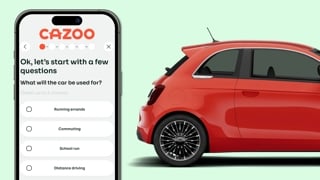
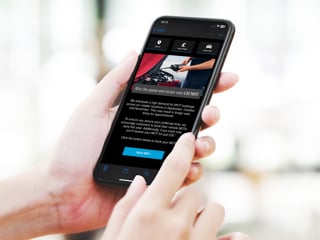
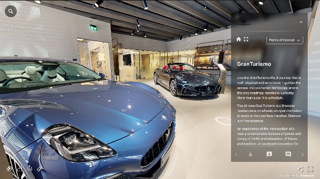
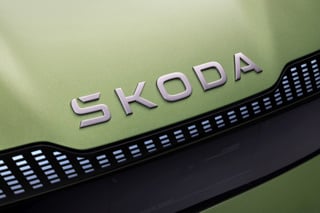
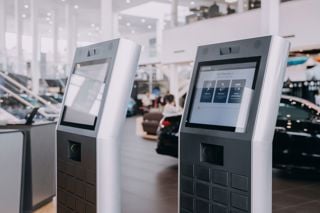












Login to comment
Comments
No comments have been made yet.